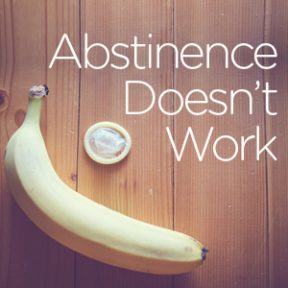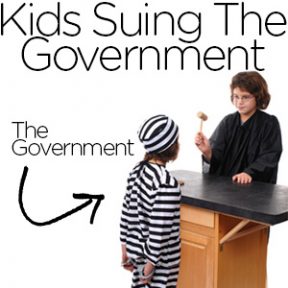 For students who have good study skills and can maintain a 3.0 GPA or higher in high school, taking a college class during the summer can give them a taste for what college might be like. I find that it gives teens a sense of independence and usually motivates them to strive to improve themselves.
For students who have good study skills and can maintain a 3.0 GPA or higher in high school, taking a college class during the summer can give them a taste for what college might be like. I find that it gives teens a sense of independence and usually motivates them to strive to improve themselves.
The good news: teens can register for classes without going through the intense application process to enter as a freshman full-time student. All you need is your high school counselor’s signature on a Verification Form and the course information on the summer class you’d like to take. Easy Peasy.
Most community colleges and 4-year universities will be posting their summer courses and schedules of classes in the next few weeks. Choose classes with the following 3 things to keep in mind:
- Does the class time (including transportation and parking) conflict with my job or other responsibilities during the summer?
- Are there prerequisites (classes that you need to take before you can take the summer class)?
- Can I be successful in this class? Read the course description and syllabus (if you can find it online) to make sure you can handle the midterms, finals, essays, and/or projects required for the course.
- Will this class satisfy a GE (general education requirement for my future college)? It’s best to take classes that satisfy most college GE requirements like English 1A, US History, World History, Political Science, Psychology, Sociology, Economics, Math, Statistics, Art, etc.
- If you know your major, take one of the lower division prerequisites. Go to your favorite college website to get a list of the lower division courses required for the major. Getting these courses completed while in high school can save you big bucks and get you to your graduation sooner – also saving more money!
Classes fill up quickly, and most full-time students have seniority over high school students, so start looking at course offerings now. You can even stay on campus if you’d like the full college experience or stay at home and just take the class on campus. I wouldn’t take more than one college class per term; take it slowly and enjoy your experience!
 For students who have good study skills and can maintain a 3.0 GPA or higher in high school, taking a college class during the summer can give them a taste for what college might be like. I find that it gives teens a sense of independence and usually motivates them to strive to improve themselves.
For students who have good study skills and can maintain a 3.0 GPA or higher in high school, taking a college class during the summer can give them a taste for what college might be like. I find that it gives teens a sense of independence and usually motivates them to strive to improve themselves.
The good news: teens can register for classes without going through the intense application process to enter as a freshman full-time student. All you need is your high school counselor’s signature on a Verification Form and the course information on the summer class you’d like to take. Easy Peasy.
Most community colleges and 4-year universities will be posting their summer courses and schedules of classes in the next few weeks. Choose classes with the following 3 things to keep in mind:
- Does the class time (including transportation and parking) conflict with my job or other responsibilities during the summer?
- Are there prerequisites (classes that you need to take before you can take the summer class)?
- Can I be successful in this class? Read the course description and syllabus (if you can find it online) to make sure you can handle the midterms, finals, essays, and/or projects required for the course.
- Will this class satisfy a GE (general education requirement for my future college)? It’s best to take classes that satisfy most college GE requirements like English 1A, US History, World History, Political Science, Psychology, Sociology, Economics, Math, Statistics, Art, etc.
- If you know your major, take one of the lower division prerequisites. Go to your favorite college website to get a list of the lower division courses required for the major. Getting these courses completed while in high school can save you big bucks and get you to your graduation sooner – also saving more money!
Classes fill up quickly, and most full-time students have seniority over high school students, so start looking at course offerings now. You can even stay on campus if you’d like the full college experience or stay at home and just take the class on campus. I wouldn’t take more than one college class per term; take it slowly and enjoy your experience!
 Everyone (who is paying attention) knows that Greenland, Canada, Alaska, and Antarctica are losing a lot of ice.
According to NASA and Princeton University’s Harig and Simons, they are losing 387 billion tons of ice/glaciers per year.
I need to say this again: 387 billion tons of ice per year! And that’s not the worst part. Antarctic glaciers are destabilizing from below via warm water channels. The warm water erodes the ice shelf base which in turn accelerates the rise of the sea level.
This scares me more than just about anything. Why aren’t we discussing solutions? Instead we are mired in a ridiculous political circus that focuses on abortion, immigration, gay rights, and other less important issues.
[Read more]
Everyone (who is paying attention) knows that Greenland, Canada, Alaska, and Antarctica are losing a lot of ice.
According to NASA and Princeton University’s Harig and Simons, they are losing 387 billion tons of ice/glaciers per year.
I need to say this again: 387 billion tons of ice per year! And that’s not the worst part. Antarctic glaciers are destabilizing from below via warm water channels. The warm water erodes the ice shelf base which in turn accelerates the rise of the sea level.
This scares me more than just about anything. Why aren’t we discussing solutions? Instead we are mired in a ridiculous political circus that focuses on abortion, immigration, gay rights, and other less important issues.
[Read more]
Now that Radar is 15 years old – yikes! – I thought I’d get Jaclyn a stuffed animal that looks just like him.
Kind of like the My Twinn or American Girl Truly-Me dolls, we got to select his pose and took photos from different angles.
After one color correction, Cuddle Clones got it right! So right, that Radar freaked out when he saw it! Poor Radar.

He was shaking and didn’t want to be near his Cuddle Clone!

Sniffing the first attempt at our Cuddle Clone – too light so they fixed it!

Radar glared at his Cuddle Clone and then ran away!

Radar running past his Cuddle Clone to get away!

Looks just like Radar!
 American teens fare consistently worse on most sexual health measures than teens in other industrialized nations. Our teens also have higher pregnancy and abortion rates that any other European nation. Ugh… And, young American women have intercourse at a younger age, use less effective contraception, and report higher rates of using no contraception at all than young women in every industrialized country. Nearly 60% of US pregnancies are unplanned or unwanted and rates of curable STDs are higher than any industrialized nation. And we’re the Super Power?
American teens fare consistently worse on most sexual health measures than teens in other industrialized nations. Our teens also have higher pregnancy and abortion rates that any other European nation. Ugh… And, young American women have intercourse at a younger age, use less effective contraception, and report higher rates of using no contraception at all than young women in every industrialized country. Nearly 60% of US pregnancies are unplanned or unwanted and rates of curable STDs are higher than any industrialized nation. And we’re the Super Power?
So what’s wrong with our sex-ed programs in the US? The government provides $300 million a year for ABSTINENCE-ONLY programs in schools, not the comprehensive sex-education that most parents want. So why would there just be an abstinence approach when there isn’t even a law requiring sex ed in schools AT ALL? You guessed it – pressure from religious groups and social taboos against adolescent sexuality.
So why aren’t abstinence-only programs working for US teens? It’s not practical to expect a child at puberty to not have sex until they marry. Children are going through puberty at a much younger age (possibly due to the hormones they eat in processed food) and adults are getting married much later (many wait until they graduate from college and establish themselves in careers). Besides, abstinence-only programs do not prevent teens from having sex but they do prevent them from having the necessary information to make smart choices and to protect themselves.
The Netherlands have the lowest rate of unplanned pregnancy, abortion, and teen pregnancy in the western world. Here are some of the themes that the Dutch use in their sex ed:
- Physical and emotional sexual development: This topic includes information about puberty of each sex for both sexes and covers physical and emotional changes that occur during puberty. Students are reassured that while they may have worries or concerns about their bodies, these concerns are a natural part of growing up and everything will be ok.
- Reproduction: This topic includes simple, accurate language and illustrations explaining sexual intercourse and reproduction.
- Weerbarheid: Translated as ‘interactional competence’, this topic addresses assertiveness, communication techniques, personal values, asking for help, and decision making. Weerbarheid encourages students to think about what they are comfortable with sexually and develop skills to maintain boundaries.
- Relationships: This topic covers heterosexual and homosexual relationships and is often used to transition from discussions of puberty to discussions of sexuality.
- Sexuality: Dutch sex education presents sexuality in a positive light, including information on the positive and pleasurable aspects of sex and relationships. Masturbation is encouraged as a safe, enjoyable way for students to discover their sexual preferences.
- Safe sex: Safe sex is a very important topic in Dutch sex education. The “Double Dutch” method is encouraged- using oral contraceptives to prevent pregnancy and a condom to prevent STDs. The safe sex topic includes information on where to get contraception, how to use it, and what to do if you are nervous about asking for it.
American schools can choose to offer sex ed according to their families’ needs. As parents, it’s really up to us to make sure that our children are prepared for sexuality by providing support, guidance, and most importantly, education.
[Source]
 So you want to go to college, or your child wants to go to college, and you don’t know where to start.
So you want to go to college, or your child wants to go to college, and you don’t know where to start.
You’re not alone. Most people choose to visit name-brand colleges and go about this college exploration process all wrong! This such a big topic that I’ve divided it into 2 separate blogs:
(1) How to choose your college list and
(2) How to organize your college visits (this blog!)
Once you know where you plan to apply to college, it’s time to lay out your map. Print out regional maps so you can organize your college visits. It’s best to visit colleges while they’re in session so summers are generally the worst time to go because the college kids are back home and the college campuses are either deserted or filled with summer camps for high school students. Remember, you want to get a taste for campus life and classes.
On your map, highlight each college so you can see all of them in one place. Then go online to determine the days and times that the college offers walking tours and information sessions. Most colleges offer both morning and afternoon tours so you can possibly visit 2 colleges per day. That’s why you want to see where the colleges are in relation to one another. Using Google Maps, determine the distance between campuses and the driving times (consider traffic). When you have a rough idea of when you would ideally like to see each campus, then go online or call the admissions office to set up your tours.
After all of your tours are reserved and confirmed, make your travel arrangements. Book your flights so you have ample time to get to your tours and explore the neighborhoods. Make hotel reservations near the campus so you don’t have to deal with traffic in the morning. It’s best to book a different hotel near each college tour that you have scheduled for the following morning, that way, you can travel to the hotel the night before and avoid heavy commuter traffic and be in close proximity to the tour the next morning.
Use your tablet or phone to keep track of each tour. Believe it or not, all of the campuses will blend together and you won’t remember the details for each of them. Did UCSC have the Baskin Engineering Dept or was that UCSB? Hmm. To keep your college tours organized, start each tour by taking a photo of the college name (sign or brochure). Then try to get photos of the same types of things on each campus: (1) classrooms; (2) dorms; (3) dining halls, (4) sports facilities; (5) libraries; and miscellaneous attractions. When you get home, create folders for each college and place the photos and other documents you receive in them. That way, when you get down to making your final decision on which colleges to apply to, you’ll have all of your photos and info in one place.
While walking on the campus tour, try to stay up in front and walk next to the tour guide. Yup, kinda like the teacher’s pet… Here’s why. While you’re walking from site to site – and when your guide isn’t tripping over curbs as he’s walking backwards – you can ask all kinds of questions about campus life and popular majors. Just know that your tour guide is paid to tell, or rather sell you, on the college. So they’ll tell you all kinds of wonderful things about the college. By walking along side the guide, you can ask more detailed questions that he/she might not tell the whole group. Here are a list of questions:
- Ask about your major (reputation of the program, best professors, claim to fame)
- How difficult is it to get classes every term?
- What percentage of students graduate within 4 years?
- Do students live on campus for all 4 years? If not, when do they generally move off campus?
- What is the Greek life like on campus? What percentage of the students are involved ?
- Describe the meal plans. Where is the best place to get pizza, burgers, sushi, ice cream on campus or near by?
- Do you need a car to get around campus and in town? If not, what’s the best way to get around?
- Have there been any date rape or sex crimes on campus over the past 5 years? What were the outcomes?
If you don’t get the answers you’re looking for from the tour guide, ask the questions during the information sessions. These sessions are usually hosted by the actual college admissions officers so you’ll get a better idea about the application process and have the opportunity to ask questions specific to you.
While you’re on campus, eat a meal or two. Check out the various options to get a taste for what they serve. Some campuses have awful meals that all look and taste the same, while others have taco bars, ethnic entrees, and even steak and lobster (It’s true! Washington University in St. Louis)!
Most campus tours do not include visiting dorms so just stand outside the dorms and ask a student to show you their room. Check out the bathrooms, showers, and other dorm rooms. Not all college dorms are equal! You’ll be surprised to find that some have quads where a couple dorms share a bathroom and others even have kitchens and living rooms! If you want to prepare some of your favorite family meals, then compare various living options at each campus.
And don’t forget the whole reason you’re going to college – to learn! Oh yeah, the classes. Try to visit campuses on school days so you can actually sit in on classes. Pick the intro class for your possible major and sit in on one of them. By comparing apples to apples, you’ll get a better sense for how classes are taught. For instance, classes at one school might have 16 students taught by professors while another might have a class of 400 taught be TAs (teaching assistants). These are important details that could have a very big impact on the quality of your education! read more
 I love this! Finally, 21 kids may have the opportunity to force the government to stop the devastation that Climate Change has and will continue to wreak on earth.
I love this! Finally, 21 kids may have the opportunity to force the government to stop the devastation that Climate Change has and will continue to wreak on earth.
It’s about time!
Dr. James Hansen, an adjunct professor at Columbia University and former director of NASA Goddard Institute for Space Studies is the guardian of “future generations” and his granddaughter is the plaintiff in the case. It’s about time that kids step up to the plate.
Julia Olson, lawyer with Wild Earth Advocates and Our Children’s Trust, says that the government has continued actions to “permit, authorize and subsidize fossil fuel extraction, development, consumption and exportation.”
The government is not just sitting by and doing nothing, they are actually doing everything to cause this problem.
[Source]
 Ever since my oldest daughter Nicole did research on GMO’s (genetically modified organisms) back in 2001, I have been worried about the GMO giant: Monsanto, and their mission to genetically alter plant genes to grow super food.
Ever since my oldest daughter Nicole did research on GMO’s (genetically modified organisms) back in 2001, I have been worried about the GMO giant: Monsanto, and their mission to genetically alter plant genes to grow super food.
Progressive countries around the world have banned food products made with GMO’s and refuse shipments of American products made with GMO’s. You’ve probably noticed all the chatter about Monsanto trying deceive the public by passing legislation that would require food manufacturers to inform the public about what they’re eating. Hmm. This seems like a no-brainer to me, but I’m once again flabbergasted by the public’s lack of concern for the safety of their food. But that’s not why I’m writing about Monsanto today.
While Monsanto created SUPER CROPS, they also created SUPER PESTS, that needed SUPER PESTICIDES to kill them. Yup! And did you know that Monsanto owns the largest herbicide product? Heard of ROUNDUP? The active ingredient in Roundup is Glyphosate which is used on most American GMO crops as well as on just about everyone’s lawns, gardens and landscaping.
Okay, so you know about Monsanto and GMOs, but you’re not worried because you buy organic fruits and veggies, and health foods at Whole Foods. Right? Are you safe? NOPE! In a recent study by oncologists Dr. Lennart Hardell and Dr. Mikael Eriksson of Sweden, Monsanto’s Glyphosate was found in California wines and even wines made with organic grapes! Glyphosate is linked to cancer, birth defects, miscarriages, and infertility in humans. It’s been found in all kinds of food, beer, wine, and fertilizers. Even Kellogg’s Kashi cereal has been tested positive for cardinogens and GMO’s.
So, what are you to do? Stop buying and using Roundup on your weeds! You’re poisoning the water, plants, and ultimately all of us. Grow food in greenhouses or aquaponic systems – they have virtually no weeds. Plant rock and succulent landscaping that needs minimal water. It’s time to rethink the chemicals we use in our gardens and stop buying food made with GMO’s, and eating food that have been genetically modified.
Bottom line: stand up to Monsanto and boycott their GMO’s AND Roundup!
 All dressed up in their Sunday best clothes, my paternal grandfather, father and aunt were one of the first to arrive at Manzanar (one of 10 relocation camps) after the US government imprisoned 120,000 Japanese Americans after the start of WWII in 1942.
All dressed up in their Sunday best clothes, my paternal grandfather, father and aunt were one of the first to arrive at Manzanar (one of 10 relocation camps) after the US government imprisoned 120,000 Japanese Americans after the start of WWII in 1942.
My father and aunt were patiently waiting on the 2 suitcases that they were allowed to bring with them for this 3-year incarceration. Guilty of “looking like the enemy,” they lost all of their personal possessions and businesses. In hindsight, not one Japanese American was convicted of spying or doing any non-patriotic acts prior to, during, and after the war. As a matter of fact, many young Japanese American men enlisted in the 442nd Regiment – the most decorated battalion in WWII – to prove their loyalty to their home country of America, while their parents and family members were incarcerated behind barbed wire through the duration of the war.
This was the greatest violation of civil liberties in American history.
 Wouldn’t you think that all AP classes were created equally? After all, every student who takes that AP course will take the exact same AP exam in May. Makes sense, right? Wrong!
Wouldn’t you think that all AP classes were created equally? After all, every student who takes that AP course will take the exact same AP exam in May. Makes sense, right? Wrong!
Ii find it really disturbing to see the disparity in the quality of the preparation students receive in standardized AP courses from coast to coast. As a college advisor, I work with public and private high school students from Monterey to San Francisco in my offices, and nationwide online. I coach them on how to study for exams and how to implement projects that will get them into top colleges. And, to ensure that they maintain decent GPA’s, I teach them how to study for class and AP exams.
Here are 2 very different examples of how teachers prepare their students for the big test at the end of the year:
AP Teacher #1:
“Joe’s” teacher at his elite private school organized a thick reader filled with photos, images, charts, and timelines that students must read and complete as part of their coursework. His teacher also gave the students multiple practice exams (real AP tests that students across the US have taken in the past) to prepare them for the big AP exam that they will take in May. When students receive this type of structured introduction to key points and topics that will be on the official exam, they’ll undoubtedly ace the final exam at the end of the year. It’s almost impossible for these students to receive anything less than a 3 (on a scale of 1 to 5; 5 being the top score) simply because every lecture, discussion, homework assignment, class projects, films, and papers were designed to give the students the foundation they need to get 4’s and 5’s. This is the ideal way to teach AP courses.
AP Teacher #2:
Just yesterday, on the other hand, I met with “Jessica,” a student who attends a public school with a history of students who don’t pass the AP exams (scores of 1 or 2). She is on spring break this week and asked me to help her organize a plan to study for her AP United States History exam. A great student with a 4.0 GPA, I was prepared to suggest my regular recommendations for AP test prep. What I learned from her about the poor preparation she has received so far was gut wrenching. Jessica’s teacher has been pregnant most of the school year and she just left on maternity leave a few weeks ago (just 6 weeks before the AP exam). The teacher had assigned homework from the textbook but didn’t offer a comprehensive reader filled with vital information and facts that she’ll need to pass the exam. When I quizzed her on the US presidents, their claims to fame, and other monumental historical events, I found that she had a general foundation but certainly not enough depth to answer the difficult questions she’s expected to know on the big day. With her preparation to date, I wouldn’t expect her to receive anything above a 2 (on a scale of 1 to 5).
That’s when I decided to even the playing field. I asked Joe if I could copy his reader to give to Jessica. Not feeling threatened because of her apparent lack of preparation, he graciously allowed me to make a copy. When Jessica looked through the reader, her face lit up. She loved how everything was organized and I could see that US history was beginning to all come together for her. Then I ordered the AP United States History workbook so she could read tips on how to ace the exam and take several practice exams. Jessica was thrilled to have these tools and promised to read through the entire reader and do all of the worksheets over her spring break. I felt like Robin Hood stealing from the rich to give to the poor! This type of systematic inequity in our educational system is going to lead to a class division where only the rich get into the best colleges – further shrinking our middle class. Not good for anyone.
I would hope that teachers who teach standardized classes like AP or IB classes would offer their students the tools they need to do well on the end-of-the year exams. I would love to see students who attend elite private schools donate their expensive flash cards, readers, and volumes of practice exams to students who can’t afford these types of luxuries. Hmm – sounds like a new project in the making!
 Did you know that our congressional representatives are NOT representing us on Climate Change?
Did you know that our congressional representatives are NOT representing us on Climate Change?
I’m confused. I thought our congressional representatives were supposed to “represent” our beliefs when they vote on initiatives that impact us. If 76% of Americans believe that climate change is caused by man, then why is it that only 41% of the House and 30% of the Senate vote accordingly? That means that over 202 million Americans are represented by climate deniers in Congress.
Say what? Well, maybe the fact that these same climate deniers have received over $73 million dollars from Big Oil might have something to do with it. Hmm.
I like what U.S. Senator Sheldon Whitehouse (D-RI) said, “Members of Congress should be accountable to their constituents, not to a fossil fuel industry that uses the threat of unlimited campaign spending to command their silence.”
[Source] Want to put faces to names? Check this out.










